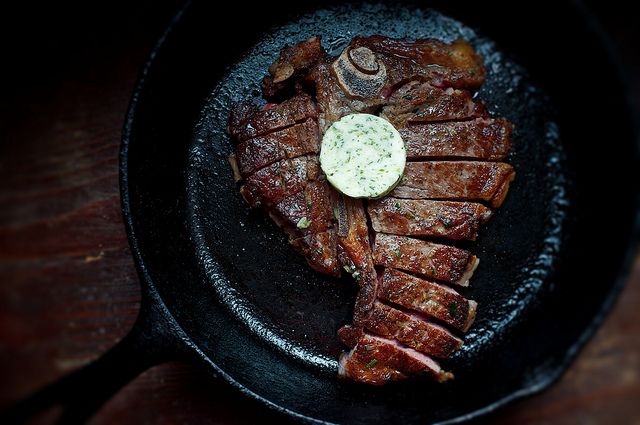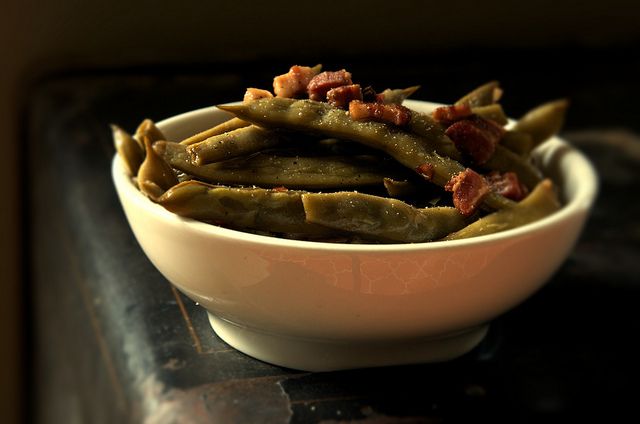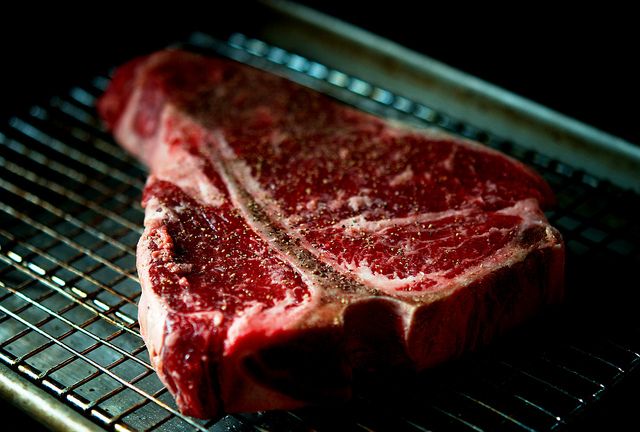Popular on Food52
Continue After Advertisement
19 Comments
Dtown B.
October 1, 2012
I swear by the method with steaks or poultry, to resonably salt and pepper your meat at the minimum of 6 hours or even over night as I prefer. Chicken comes out perfect this way. Picked this up from Molly Stevens. Tom keep up the great work, and take a more cheery foto!
Kendall
September 28, 2012
Maitre d'Hotel! This takes me way back! My initial training, the huge Hobart bowls full of green compound butter I used to lug to the back counter for rolling into logs... later stuffing shells and lathering up steaks with the stuff... Exploding escargot shells. Man; good memories, though I know I would not have expected them to be so at the time. Then it was pretty much move your ass to avoid the chef's all to rapid towel whipping! Good technique for the steak, too. Long used something similar.
phelonious
September 27, 2012
concur, i have used chef judy's dry brining technique for years but never overnight, will give it a try with your recipe. was also curious about what camera do you use for your photos, they are absolutely amazing.
thirschfeld
September 28, 2012
Phelonious, I use her dry brining technique all the time but it isn't quite what I am talking about. Here you would salt the steak like you would if you were seasoning it for cooking. You probably already get this but I just don't want you to dredge the steak in two or three tablespoons of salt and let it sit overnight. I use several cameras, from my iPhone, an old nikon coolpix, a nikon d700 and a fuji x100. I believe the steak pic was taken with the d700 with a 1985 Nikkor 24mm wide angle set to F2.8
Merrill S.
September 27, 2012
Making this over the weekend!
thirschfeld
September 27, 2012
That makes me happy! I hope Jonathan and little miss Clara find it satisfactory.
Sarag
September 26, 2012
If the steak is half as great as this writing it will be worth making. Guess I am off to source great steaks. The college kids are back next weekend and have requested steak and potatoes but I bet I can slide the beets onto their plates, too. The beans will be hard to find around here....probably even harder than the steak.
Traveler
September 26, 2012
Can green beans or snap beans be substituted for the Romano beans? Any others? I don't have access to Romano beans.
Joe C.
September 25, 2012
I eagerly look forward to trying this out, but why the Franglais? Shouldn't it be "maître du buerre"?
thirschfeld
September 25, 2012
Joe, I am an old kitchen hack and you will have to excuse my French. Franglais and Spanglish are my friends and without them I would be lost. I hope you enjoy the steak.
Kitchen B.
September 25, 2012
This is speaking volumes to me Tom - I want a career not a job - and here your explain it so perfectly with steaks! I love the compound butter too......
Amanda H.
September 25, 2012
Is it ok to eat steak before noon? Delicious menu Tom!
mrslarkin
September 25, 2012
Tom this menu looks incredible. I think steak is totally acceptable before noon. Especially with a "froached" egg on top!
thirschfeld
September 25, 2012
I did eat it before noon, eggs, over easy, on the side. Thank you both. I have taken a serious liking to Romano beans this year too.


 º
º

See what other Food52 readers are saying.